

Max Davies
2026 GWM Cannon Ultra review
6 Days Ago

Design Contributor
It’s official. The legendary Focus RS, one of the spiciest hot hatches to roll forth from the Ford Performance, is dead.
Cause of death? Strict emission standards, and prohibitively high development costs.
Here’s a breakdown of each generation, along with the special editions that rolled out along the way.
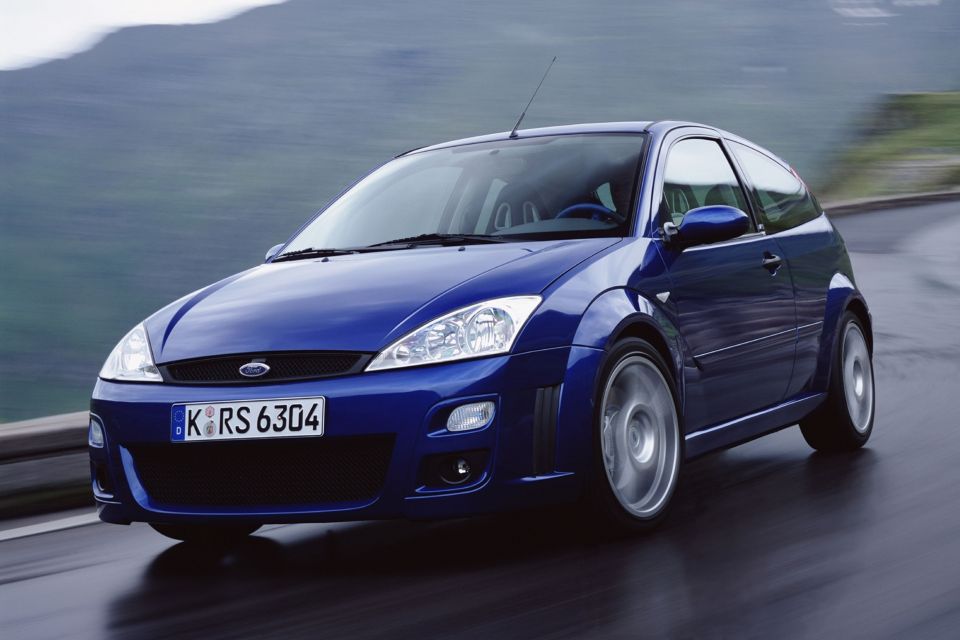
The first-generation Focus RS was launched in 2002, signalling the return of the RS badge to the Ford range after a long hiatus. It was inspired by Ford’s success in the World Rally Championship, and was produced in a limited number of 4501 units, exclusively available in Europe.
As the most hardcore variant of the first-generation Focus (1998-2004), the RS was fitted with a turbocharged 2.0-litre engine producing 158kW of power and 310Nm of torque.
Power was transmitted to the front axle through a five-speed manual gearbox, with the help of a Quaife limited-slip differential. The car could accelerate from 0-100 km/h in 6.7 seconds, before topping out at 232 km/h.
Other upgrades included a new suspension setup and more powerful brakes by Brembo.
Visually, it was distinguished by the exclusive Imperial Blue Metallic shade, the five-spoke 18-inc OZ Racing wheels and the RS-specific bodykit resembling its WRC counterpart.
Inside the cabin, the sporty atmosphere was enhanced thanks to the heavily bolstered seats and the black and blue upholstery from leather and Alcantara.
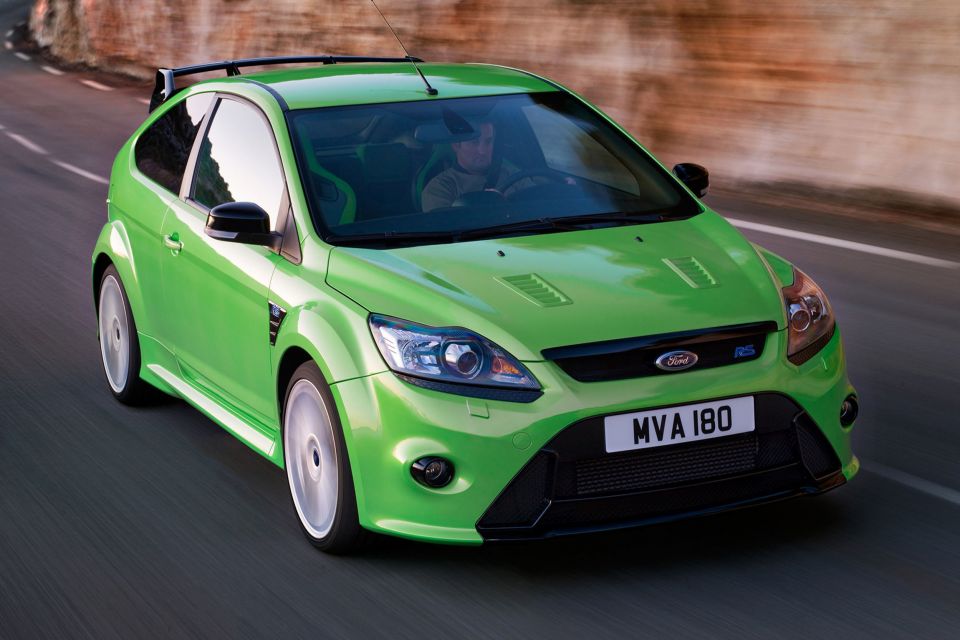
The second-generation Focus RS was launched in 2009 following the continuous presence of the car in WRC.
It was based on the three-door variant of the facelifted second-generation Focus (2008-2011) and was produced in much larger numbers than its predecessor – even though Australia only got 315 units.
Under the bonnet was a turbocharged five-cylinder 2.5-litre engine producing 224kW and 440Nm. Power was transmitted to the front axle through a six-speed manual gearbox and a limited-slip differential, making the RS one of the most powerful and best handling front-wheel drive cars of its time.
That’s not to say it couldn’t be a handful, though.
It could accelerate from 0-100 km/h in 5.9 seconds, and topped out at 263km/h. Besides the power boost, the RS also got bigger brakes than the Focus ST, and a more focused suspension setup with the RevoKnuckle system at the front.
Visually, it was distinguished by the ultra-aggressive bodykit including larger bumpers and a large rear wing, the famous Ultimate Green colour and the multi-spoke 19-inch wheels.
Inside were bucket seats from Recaro, additional gauges on the dashboard, RS badges, carbon-look trim for the central console, a shorter gearshift lever, and aluminium details.
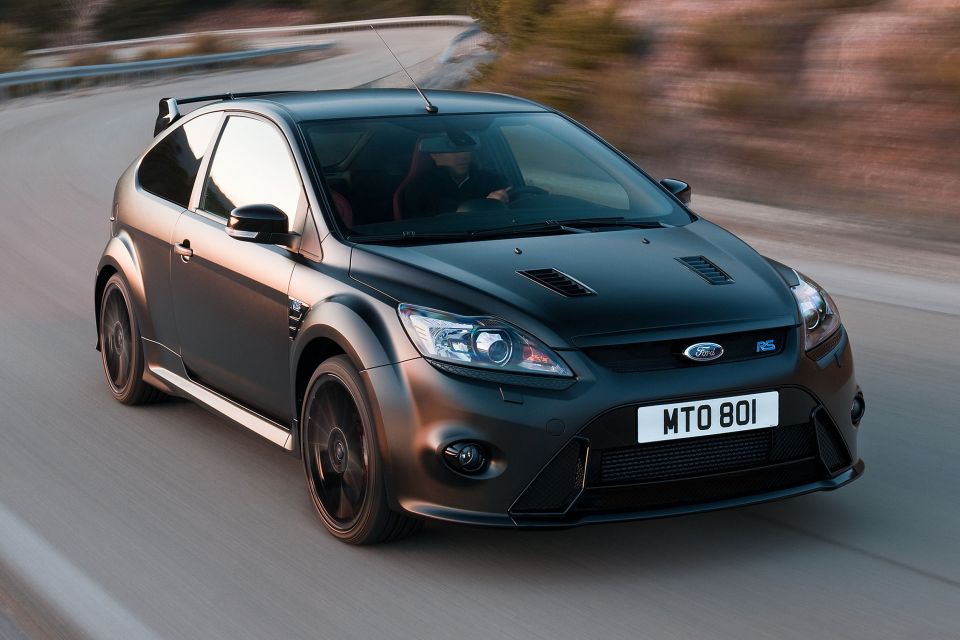
The RS500 was a special edition of the second-generation Focus RS, produced in a limited number of 500 units, exclusively available in Europe. That’s right, Europe got more of the special than Australia did of the original.
The five-cylinder 2.5-litre engine received a series of upgrades from Ford Performance and Mountune engineers, resulting to an increased output of 257kW and 460Nm. This allowed for an improved 0-100 km/h acceleration time of 5.7 seconds and a slightly increased top speed of 265km/h.
The RS500 was easily distinguished by the matt black exterior vinyl over a Panther Black paint, combined with tinted windows, blacked-out details and black 19-inch rims.
Inside it came with black upholstery, red stitching, red Recaro seats and a numbered plaque on the centre console.

The third- (and final) generation Focus RS was launched in 2015, widely known as one of the most powerful and capable hot hatches of its time. It was based on the facelifted version of the third-generation Focus (2015-2018), available only in a five-door body.
The new turbocharged four-cylinder 2.3-litre EcoBoost engine produced 257kW and 470Nm. For the first time, a six-speed gearbox sent the power to all four wheels with the help of a GKN Twinster AWD system featuring torque vectoring and a drift mode.
With launch control, the Focus RS could accelerate from 0-100 km/h in 4.7 seconds and its top speed was rated at 266km/h.
The electronically controlled suspension had stiffer dampers, the steering was quicker and the Brembo brakes were even larger.
Visually, the Focus RS MK3 got a unique bodykit with redesigned front and rear bumpers, 19” wheels, a massive rear wing, and a diffuser housing dual tailpipes. Inside were Recaro seats, a flat-bottomed and RS-branded steering wheel, additional gauges on the dashboard and other sporty touches.

Towards the end of its production cycle, Ford launched the Focus RS Limited Edition which was produced in 1000 units for the USA, 500 units for Canada, 500 units for Australia, and 800 units for Europe.
Even though there were no power upgrades on the EcoBoost engine, the addition of the Quaife limited-slip differential on the front axle improved the car’s handling in conjunction with the AWD system.
The Focus RS Edition was exclusively available in Nitrous Blue exterior colour (also available in Race Red for the North American markets), combined with an Absolute Black treatment for the roof, mirror caps, and roof spoiler.
Behind the 19-inch forged wheels finished in Graphite Gray there were Brembo calipers painted in blue.
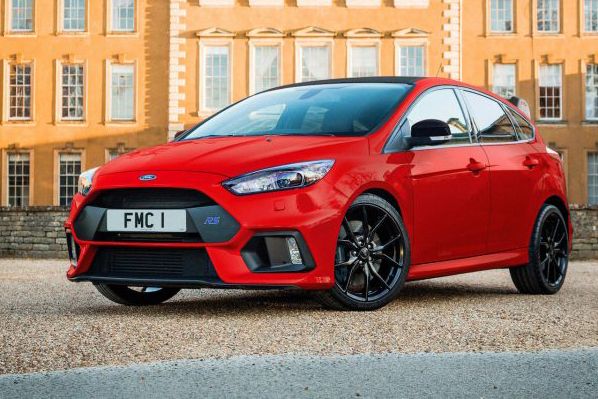
As a farewell to the third-generation Focus RS, Ford launched the Red Edition – limited to 300 units – in the United Kingdom.
Like the Limited Edition, the Red Edition came standard with a Quaife mechanical limited-slip differential and featured various equipment upgrades.
However, as the name suggests, it was only available in Race Red exterior, combined with black wheels, roof, mirror caps and rear spoiler.
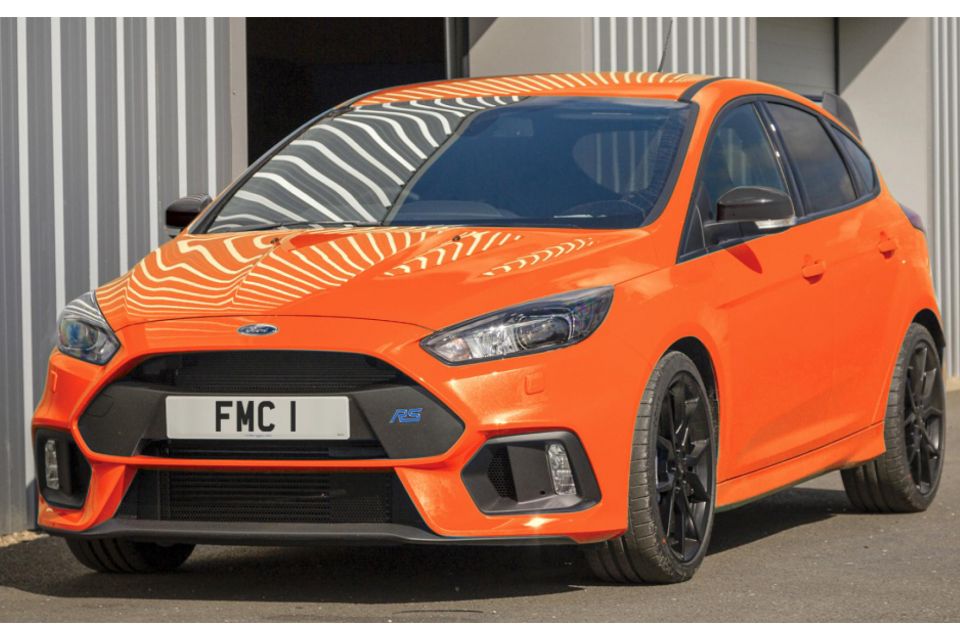
The last and most exclusive version of the Focus RS was the Heritage Edition, available in the UK with a limited production of 50 units.
Thanks to the factory-approved Mountune tuning pack, the turbocharged 2.3 litre EcoBoost produced 276kW and 510Nm.
That power was transmitted to all four wheels through the usual GKN Twinster AWD system and the Quaife mechanical limited-slip differential at the front.
The 0-100 km/h acceleration time was improved to 4.2 seconds, while top speed was increased to 274km/h.
The Focus RS Heritage Edition was only available in Tief Orange exterior shade, honouring the 50 years from the launch of the Escort RS in the UK market.
It was combined with 19-inch forged wheels painted in black, a sunroof, privacy glass, black mirror caps and black rear spoiler. As you would expect, the equipment included almost all available options.
What was your favourite Focus RS generation?
Where expert car reviews meet expert car buying – CarExpert gives you trusted advice, personalised service and real savings on your next new car.


Max Davies
6 Days Ago


Josh Nevett
4 Days Ago


Max Davies
4 Days Ago


Max Davies
3 Days Ago


Neil Briscoe
2 Days Ago


Max Davies
1 Day Ago